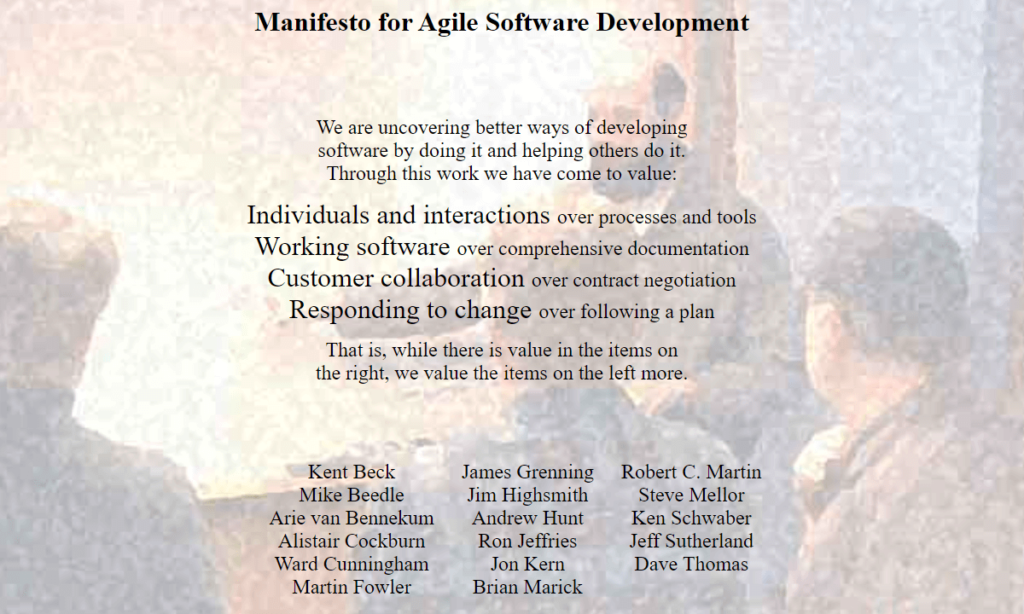
Since the early ’90s, teams have been using Scrum to help them complete complex projects. Despite its popularity, many still don’t know what Scrum is. Nor do they understand how it can help them create high-quality deliverables, become better communicators and increase their efficiency. Here, we’ll answer the question “what is Scrum” and show you how to get started.
In this guide to Scrum and its Agile framework, you’ll learn all there is to know about this flexible methodology. By the end of it, you should know if it’s right for you and your team. Without further ado, let’s jump into it.
What Is Scrum Methodology?
Scrum was created for software developers who were tired of traditional project management methods. The Scrum method embraces the values and principles of the Agile Manifesto. It then builds upon them with a framework that encourages communication, collaboration and listening to clients, stakeholders and everyone on the team.
In simple terms, Scrum is an Agile project management methodology for complex projects that small cross-functional teams use to work toward an end goal.
Scrum Values & Principles
For any project management methodology to work, it has to be built upon a foundation of values and principles.
Scrum Values
To succeed and see measurable change, Scrum teams must embrace the methodology’s five core principles: courage, focus, openness, commitment and respect. We’ll quickly cover the five Scrum values below.
Courage
Scrum teams operate as one and not as individuals. The team rises, falls and makes challenging decisions together. As one cohesive unit, the team always does the right thing, regardless of how challenging it may be.
Focus
Teams remain focused on the task at hand. At no time do they take their eyes off the ball. Daily Scrum meetings and retrospective meetings help keep the team focused and ready.
Openness
Every team member is open to feedback, learning and new ideas and has no problems sharing feelings about the project and where it is headed. Open communication builds trust, and when trust is built, work improves.
Commitment
Since Scrum teams are small, all members must be committed to the project they have been assigned to, their time-based tasks and each other.
Respect
Respect plays a key role in Scrum teams. Each team member respects everyone’s strengths and weaknesses, and no team member is left out to dry when problems arise.
Scrum Principles
Like many project management methodologies, Scrum has a core set of principles that help guide teams through the Scrum process. The following sections will cover the three empirical principles that help make Scrum successful.
Transparency
Everyone involved in the Scrum process, from the clients to development team members, must be transparent, open and honest.
Inspection
Inspections within Scrum are not audits by a third party; they are internal reviews of the product being developed and the processes used by the team. Inspections require every team member to be transparent and honest to ensure continuous improvement.
Adaptation
The entire team must be able to adapt to meet customer requests, new processes that were discussed during inspections and other challenges. Adaptability can lead to better efficiency, reduced costs and shorter product delivery times.
How Does Scrum Work?
There are a lot of moving parts in the Scrum framework. Below, we will cover everything from Scrum roles and job functions to Scrum artifacts (tools) and Scrum events (meetings) so that you can better understand how things work in the world of Scrum.
Scrum Roles
Scrum teams are small, usually no more than 10 members. The whole point of Agile teams is to be flexible and adaptable so that large amounts of work can be completed in short time periods (sprints).
Product Owner
The product owner is a messenger between the development team, clients and stakeholders. They aim to deliver the best value possible to all involved.
Scrum Master
The scrum master is the leader of the Scrum team. Their job is to coach teams on Scrum best practices and understand the work being performed.
Development Team
A Scrum development team works to create successful incremental releases of the deliverable. Development teams consist of highly skilled, cross-functional team members that are self-organizing.
Scrum vs Agile vs Kanban
There’s a lot of confusion regarding Agile ways of working. Somewhere along the way, the notion that Agile is a methodology crept in. Agile isn’t a methodology at all. Scrum and Kanban are also often confused as they use similar methods.
Below, we will look at Scrum vs Kanban and Scrum vs Agile so that you can better understand the differences between them.
Scrum vs Agile
As discussed in our Scrum vs Agile guide, Scrum is a project management methodology, whereas Agile is a set of principles and values. Agile methods embrace communication and collaboration and put the customer’s immediate needs above documentation and plans. Scrum’s developers embraced Agile principles and values and built a flexible framework around them.
Scrum vs Kanban
Scrum and Kanban are similar in that they use Agile boards (Kanban and Scrum boards) to visually represent the tasks of a project. However, Scrum is better for smaller teams and has more structure (artifacts, events and roles), making it suitable for complex projects. Kanban is for much larger Agile teams working on simpler projects with repeatable actions.
Benefits of Scrum Methodology
There are many benefits to Scrum. Start using it, and before long, you’ll see that it can help deliver quality products in a timely manner. It can help improve teamwork, increase flexibility and raise customer satisfaction.
The original content of the note was published on Cloudwars.com. To read the full note visit here